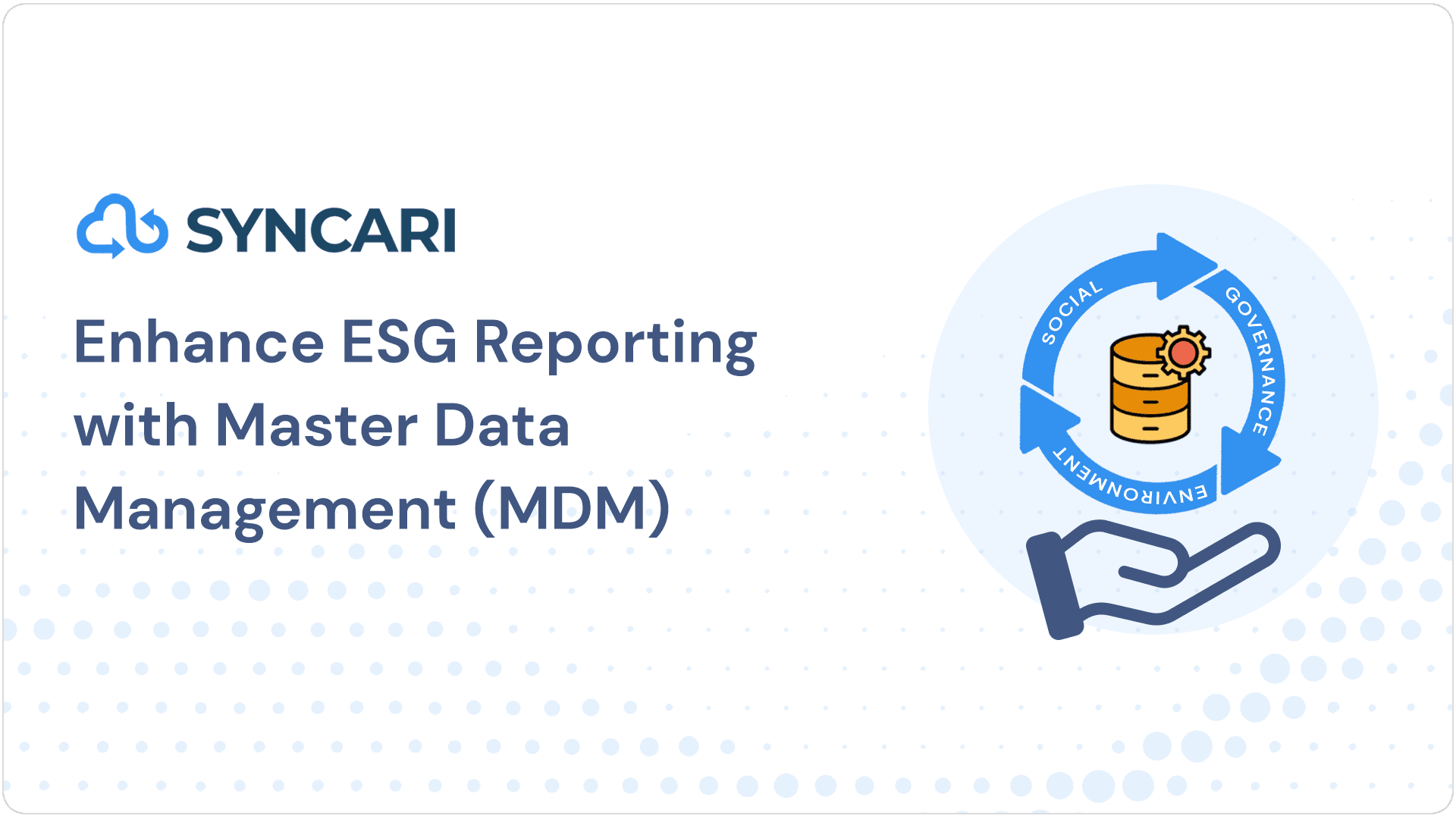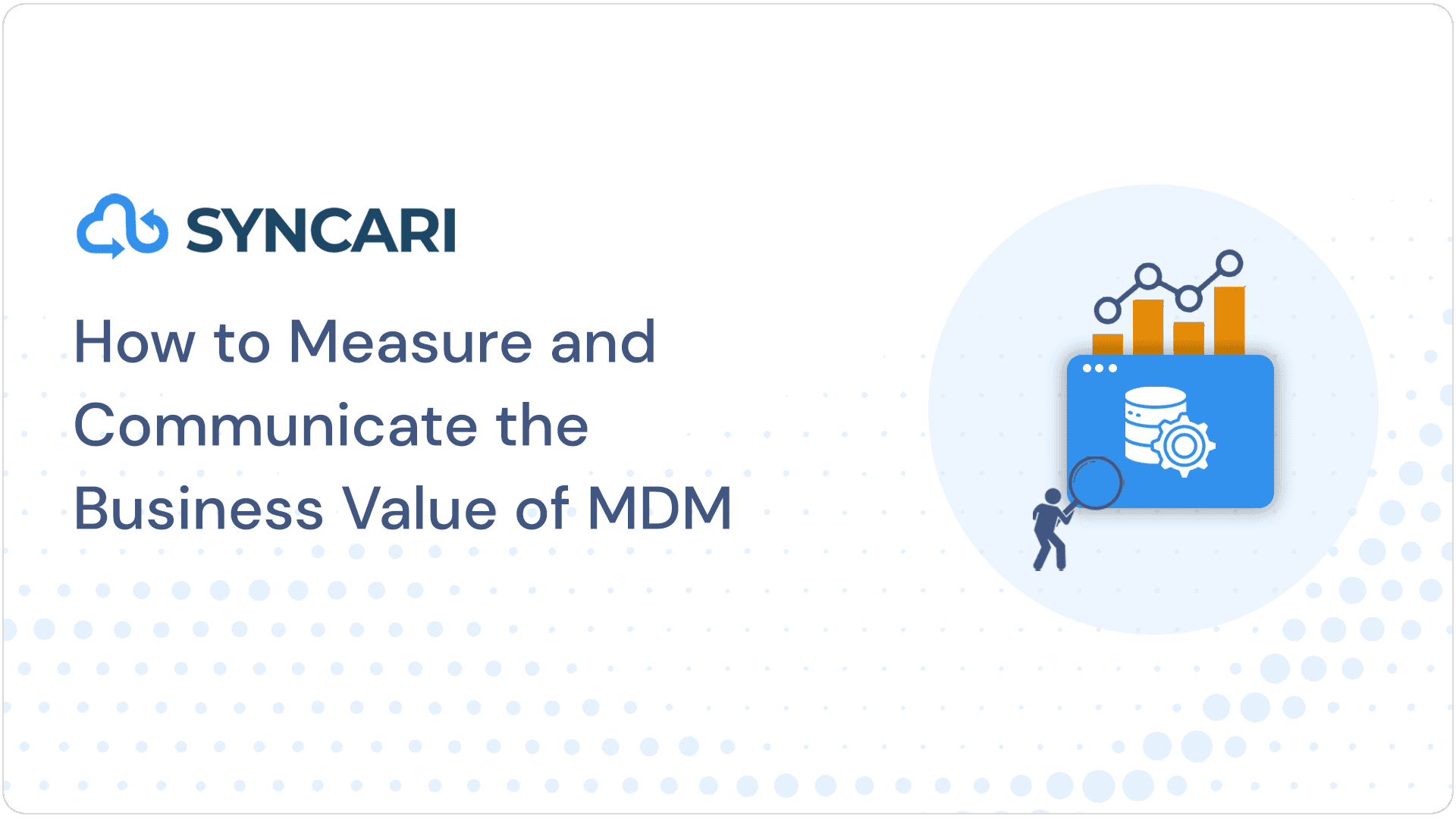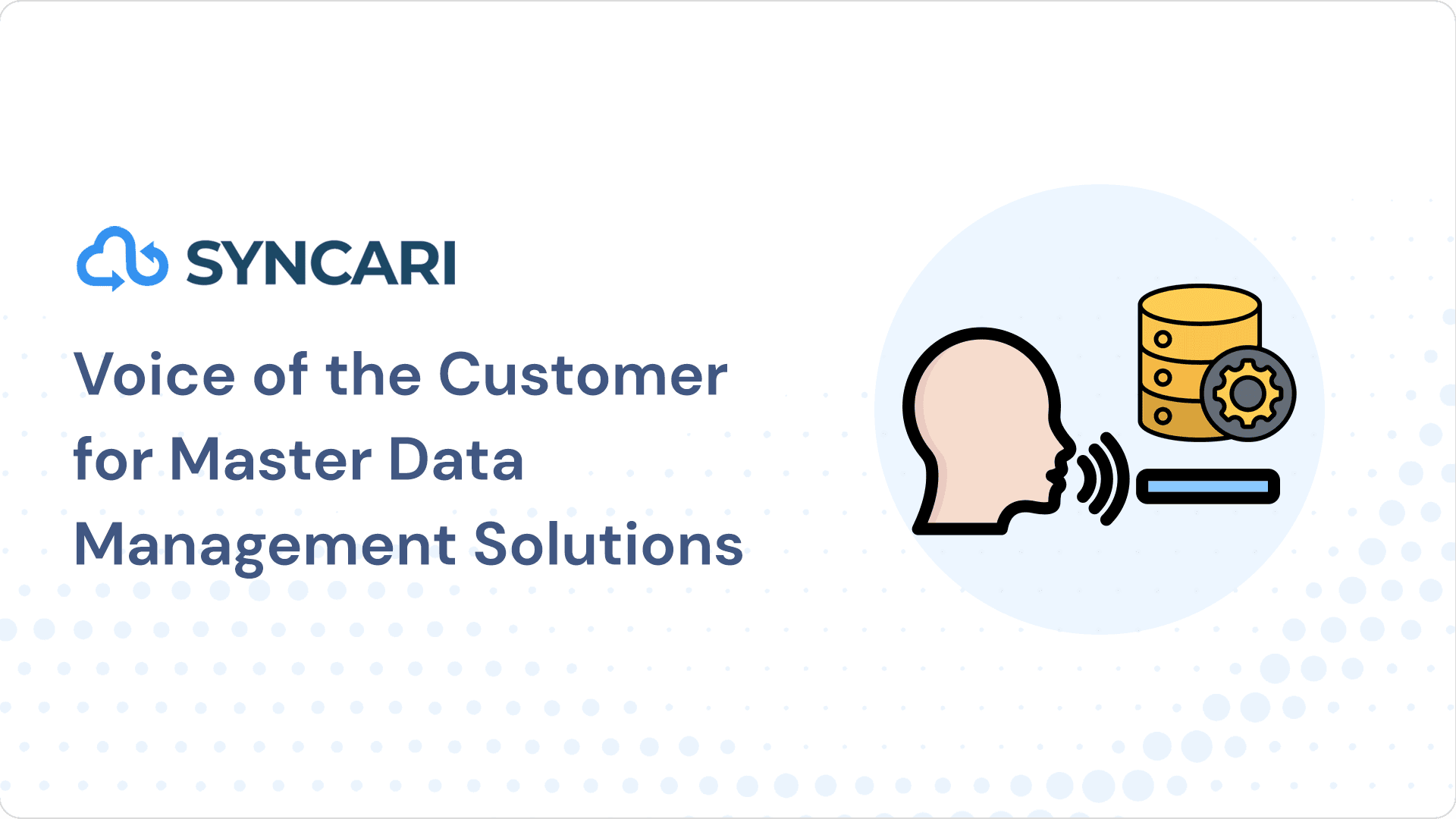In today’s data-driven business landscape, organizations are constantly seeking ways to optimize their customer data management and leverage its full potential. Two of the main strategies that businesses deploy to leverage data at scale are Customer Data Platforms (CDP) and Master Data Management (MDM). While these concepts have long been treated as separate entities, recent developments have opened doors to new possibilities by unifying these two powerful approaches.
In this blog post, we will explore the historical separation of CDP and MDM and provide a brief overview of their respective concepts. By understanding the core functionalities and benefits of CDP and MDM individually, we can lay the foundation for the exciting union that has the potential to revolutionize data management practices in businesses across various industries.
Traditional CDP vs. First-Party Data Unification
Understanding the difference between traditional CDP and first-party data unification
In customer data management, Customer Data Platforms (CDP) have long been recognized for their ability to segment and track web visitors, connecting them to known individuals in a company’s database. This approach has proven invaluable for businesses looking to personalize customer experiences and deliver targeted marketing campaigns. However, in the evolving landscape of data management, a new concept has emerged – first-party data unification.
Strengths of traditional CDPs
While traditional CDPs excel at capturing and analyzing customer interactions on websites, they often fall short when it comes to unifying data from various disparate sources and systems. This limitation becomes particularly pronounced in the B2B space, where customer relationships are complex and extend beyond website visits. B2B interactions involve multiple stakeholders, accounts, and touchpoints that cannot be adequately captured by focusing solely on website tracking.
Strengths of first-party data unification
First-party data unification takes a more comprehensive approach by enabling B2B companies to harmonize and consolidate their customer data across the entire organization. Unlike traditional CDPs, which primarily focus on web-based interactions, first-party data unification considers data from various systems and applications used throughout the customer journey. This includes CRM, marketing automation, customer support, ERP, sales automation, and more.
First-party data unification is more comprehensive
By unifying first-party data, B2B organizations gain a holistic and accurate view of their customers and accounts. They can connect the dots between different touchpoints, allowing for a deeper understanding of customer behavior, preferences, and needs. With this comprehensive understanding, businesses can deliver more personalized and relevant experiences, leading to improved customer satisfaction and loyalty.
First-party data unification also helps break down data silos that often hinder effective data management and decision-making. It ensures that information from various sources is synchronized and up-to-date, eliminating inconsistencies and redundancies. This allows businesses to make data-driven decisions with confidence, armed with a complete and accurate picture of their customers.
Moreover, by embracing first-party data unification, B2B companies can enhance their internal operations and collaboration. With unified data accessible across departments and systems, teams can work together more seamlessly, align their efforts, and provide a consistent customer experience throughout the organization.
While traditional CDPs have been instrumental in web visitor tracking and segmentation, first-party data unification takes a broader and more holistic approach. It enables B2B organizations to unify data from multiple sources and applications, providing a comprehensive view of customers and accounts. By breaking down data silos, delivering personalized experiences, and enhancing internal collaboration, first-party data unification empowers businesses to stay ahead in today’s competitive landscape.
Exploring the concept of first-party data unification
In the digital age, businesses are collecting vast amounts of customer data from various sources and touchpoints. However, the challenge lies in harnessing this data effectively and unifying it to gain meaningful insights. This is where the concept of first-party data unification comes into play.
First-party data refers to the information collected directly from customers and prospects through interactions with your business. It includes data obtained from sources such as website visits, email interactions, customer support inquiries, purchases, and more. Unifying this first-party data involves bringing together all these data points into a single, centralized view.
The goal of first-party data unification is to create a comprehensive and accurate representation of each customer or account. By consolidating data from various systems and applications, such as CRM, marketing automation, and customer support, businesses can connect the dots and gain a deeper understanding of their customers’ behaviors, preferences, and needs.
One of the key benefits of first-party data unification is the ability to deliver personalized experiences. When businesses have a complete view of their customers’ interactions, they can tailor their marketing messages, offers, and recommendations to be more relevant and targeted. This personalization enhances customer engagement and satisfaction, ultimately driving better business outcomes.
Another advantage of first-party data unification is improved data quality and integrity. Data scattered across multiple systems can lead to inconsistencies, duplication, and outdated information. By unifying this data, businesses can ensure data accuracy, integrity, and consistency. This, in turn, enables more reliable analytics, reporting, and decision-making based on a trustworthy and unified dataset.
First-party data unification also facilitates better segmentation and audience targeting. By having a holistic view of customer interactions, businesses can identify common patterns, segment their audience based on behavior and preferences, and create more effective marketing campaigns. This targeted approach improves the efficiency of marketing efforts and increases the likelihood of driving desired outcomes.
Furthermore, first-party data unification supports compliance with data regulations and privacy standards. With data consolidated in a central location, businesses can better manage consent and permissions, ensuring compliance with regulations such as GDPR and CCPA. By maintaining control over customer data and respecting privacy preferences, businesses build trust and maintain strong relationships with their customers.
First-party data unification is a powerful concept that enables businesses to consolidate and leverage their customer data for improved personalization, data quality, segmentation, and compliance. By embracing this approach, businesses can unlock the full potential of their data and gain a competitive edge in understanding and serving their customers.
The Need for First-Party Data Unification in B2B
Challenges B2B companies face in unifying first-party data across their GTM tech/business applications
B2B companies operate in a complex ecosystem where customer data is scattered across multiple systems, creating a significant challenge in unifying first-party data across their go-to-market (GTM) technology and business applications stack. Unlike business-to-consumer (B2C) companies that primarily deal with individual customers, B2B organizations engage with accounts, making data unification even more complex.
The distributed nature of data in B2B companies poses several challenges. First, customer data is typically stored in disparate systems such as CRM, marketing automation, customer support, ERP, and sales automation platforms. Each system contains valuable insights about customers, accounts, interactions, and transactions. However, the lack of integration and synchronization across these systems leads to fragmented and incomplete data, making it difficult to have a holistic view of customers.
Furthermore, B2B companies often face challenges in maintaining data accuracy and consistency. With data residing in different systems, updates or changes made in one system may not be reflected in others, resulting in inconsistencies and outdated information. This can lead to inaccurate customer profiles, missed opportunities, and hindered decision-making.
Another obstacle is the lack of control and governance within the core business application stack. Existing solutions often focus on specific functions or data sources, leaving gaps in unifying data across the entire GTM technology landscape. This prevents B2B companies from gaining a comprehensive understanding of their customers and limits their ability to deliver personalized experiences, targeted marketing campaigns, and efficient operations.
Moreover, the complexities of B2B relationships add another layer of challenge. B2B interactions involve multiple contacts, stakeholders, and decision-makers within an account. Understanding and tracking these relationships over time is crucial to gaining a complete picture of customer behavior, preferences, and account dynamics. However, without a unified data strategy, it becomes difficult to connect the dots and leverage these insights effectively.
The consequences of these challenges are significant. B2B companies may struggle to identify cross-selling or upselling opportunities, miss out on delivering personalized experiences, and face difficulties in meeting regulatory compliance requirements. In addition, the lack of data unification hinders the ability to develop accurate forecasts, perform data-driven analyses, and make strategic business decisions.
To overcome these challenges and unlock the full potential of their first-party data, B2B companies need a comprehensive solution that can bridge the gaps and unify their GTM tech/business applications. By centralizing and synchronizing data across systems, B2B organizations can establish a single source of truth, ensuring data accuracy, consistency, and integrity.
How Master Data Management (MDM) Works
Master Data Management is an approach that focuses on creating a single, unified view of an organization’s critical data entities, such as customers, products, suppliers, and employees. By consolidating these data entities and establishing a trusted source of information, MDM enables organizations to make informed decisions, enhance operational efficiency, and improve overall data quality.
The MDM process typically involves the following key steps:
- Data Integration: MDM integrates data from various sources across the organization, eliminating data silos and creating a unified data repository.
- Data Cleansing: The integrated data undergoes a thorough cleansing process to identify and rectify inconsistencies, errors, duplicates, and inaccuracies.
- Data Governance: MDM establishes a framework for data governance, defining policies, roles, and responsibilities for data management and ensuring compliance with regulatory requirements.
- Data Quality Management: MDM employs data quality tools and techniques to measure, monitor, and improve data quality, ensuring data accuracy and consistency.
- Data Synchronization: MDM synchronizes the master data across different systems and applications, ensuring that all stakeholders have access to consistent and up-to-date information.
Why MDM Has Primarily Been for Big Enterprises:
- Scale and Complexity: Implementing MDM initiatives often involves dealing with vast amounts of data, complex data models, and diverse systems. Big enterprises typically have a larger data ecosystem, making it more critical for them to invest in MDM to manage the sheer scale and complexity effectively.
- Legacy Systems and Data Silos: Large organizations often have a legacy IT infrastructure with multiple systems and applications that operate in isolation. These systems may have their own databases and data models, leading to data silos. MDM helps break down these silos by integrating and consolidating data, enabling big enterprises to have a holistic view of their master data.
- Regulatory Compliance: Compliance with regulations such as GDPR, CCPA, and industry-specific requirements is a significant concern for big enterprises. MDM provides a centralized and governed approach to manage sensitive data, ensuring compliance with data protection and privacy regulations. The potential risks and legal consequences make MDM an essential investment for larger organizations.
- Resource Availability and Expertise: Implementing MDM requires dedicated resources, skilled personnel, and technical expertise. Big enterprises often have the necessary budget and resources to undertake such initiatives, including hiring specialized MDM teams, investing in infrastructure, and procuring MDM software licenses.
- Return on Investment (ROI) Considerations: MDM initiatives can be costly and time-consuming. Big enterprises, with their extensive customer bases, supply chains, and complex data landscapes, are more likely to reap substantial ROI from implementing MDM. The potential benefits, including improved operational efficiency, enhanced customer experience, and better decision-making, justify the investment for these organizations.
Master Data Management plays a vital role in ensuring data accuracy, consistency, and reliability within organizations. While MDM has primarily been associated with big enterprises, the reasons behind this association are multifaceted. The scale, complexity, regulatory compliance.
Limitations of existing solutions in providing control and governance within the core business application stack
While B2B companies recognize the importance of unifying first-party data across their go-to-market (GTM) technology and business applications stack, they often face limitations with existing solutions that hinder their ability to achieve control and governance over their data.
One common limitation is the fragmented nature of existing data integration solutions. Many companies rely on point-to-point integrations or custom-built connectors to synchronize data between different systems. However, this approach can quickly become complex and difficult to manage as the number of systems and integrations grows. It often results in data silos, inconsistent data formats, and a lack of visibility and control over the entire data flow.
Additionally, these traditional integration approaches often require extensive manual configuration and maintenance. IT teams spend significant time and effort mapping data fields, defining data transformation rules, and monitoring the integration processes. This manual work not only slows down the integration process but also introduces the risk of human errors and delays in data synchronization.
Existing solutions may lack the flexibility and scalability required to adapt to evolving business needs. B2B companies operate in dynamic environments where new systems and applications are constantly being added or replaced. As a result, the data integration solution must be able to seamlessly accommodate these changes without disruption or additional development effort.
Another limitation lies in the governance and control of data within the core business application stack. B2B companies need a comprehensive solution that provides a centralized platform to manage data quality, data privacy, and compliance across their various systems. Existing solutions often lack robust data governance capabilities, leaving organizations vulnerable to data inconsistencies, security breaches, and regulatory compliance risks.
Moreover, B2B companies face unique challenges related to the complexity of their customer relationships and account hierarchies. Many existing solutions are designed with a B2C focus, where individual customer profiles are the primary concern. However, in B2B scenarios, it is essential to capture and maintain accurate data on the relationships between accounts, contacts, and product users. Without this level of granularity and context, organizations struggle to gain a comprehensive understanding of customer behavior, account dynamics, and the broader business landscape.
To overcome these limitations, B2B companies require a modern autonomous Master Data Management (MDM) 3.0 solution that offers comprehensive control and governance within their core business technology stack. Syncari, a platform that combines the power of a Customer Data Platform (CDP) with MDM 3.0 capabilities, addresses these challenges and enables decision-makers to access real-time customer data insights and accelerate growth.
“MDM 3.0 can help power a comprehensive view of the customer,” said Scott Brinker, Editor at chiefmartec.com. “This ensures the data is accurate and actionable.”
With Syncari, B2B organizations can achieve seamless data synchronization, accurate data mapping, and real-time updates across their GTM tech/business applications stack. The platform offers a flexible and scalable approach, allowing businesses to easily adapt to changing needs and integrate new systems without disrupting the existing data flow. Additionally, Syncari’s robust data governance features ensure compliance with data privacy regulations and enable organizations to maintain data integrity and quality.
Conclusion
The power of combining Customer Data Platforms (CDP) and Master Data Management (MDM) 3.0 through Syncari cannot be understated. While CDP and MDM have traditionally been treated as separate entities, Syncari brings them together into a unified platform that revolutionizes data management practices.
Don’t let fragmented data and limited control hinder your organization’s growth. Embrace Syncari and experience the transformative power of unified first-party data. Visit Syncari’s website today to learn more about how Syncari can revolutionize your data integration needs and propel your business forward.
This blog post originally appeared on the Syncari website. Click here to view the original blog post.


